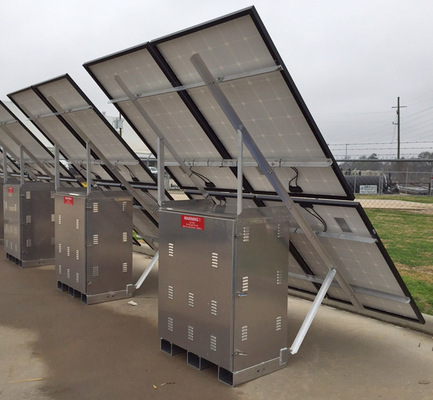- 1-905-452-8193
- Contact Us
- Member Login
- Get Listed Today
- 220,911 members

Solar panels use sunlight to generate electricity, and to do this, they rely on batteries. These batteries store the energy generated by the solar panels and are essential for running your home or business when there is no sun. There are a wide variety of batteries available, each suited to different applications. In this article, we will take a look at seven different types of solar panel batteries and explore their advantages and disadvantages.
Solar installation Sydney owner Mina Gilto explains that when it comes to using solar energy for generating electricity, one of the most important components is the battery system. Solar cells convert sunlight into usable electrical power through the use of semiconductors that absorb photons from the sun's rays. This electrical charge then needs to be stored so that it can be used later on, and that is where batteries come in.
Batteries provide a means of storing electrical energy so that it can be used when needed, even if there is no sun available to power the solar cells. There are many different types of solar batteries available on the market, each with their advantages and disadvantages.
Let us take a look at seven different types of solar batteries and explore their benefits and drawbacks.
1) Lead-Acid Batteries: Lead-acid batteries are some of the most common types of solar batteries available on the market. They are typically very affordable and have a long lifespan, making them a popular choice for those looking to use solar power. However, lead-acid batteries do require regular maintenance and can be quite heavy, making them difficult to transport.
2) Lithium-Ion Batteries: Lithium-ion batteries are a newer type of battery that is becoming increasingly popular in the solar market. They are much lighter than lead-acid batteries and do not require as much maintenance. However, they are also more expensive and have a shorter lifespan.
3) Nickel-Cadmium Batteries: Nickel-cadmium batteries are another type of lead-acid battery, but they use a different chemical reaction to store electricity. These batteries are typically cheaper than lithium-ion batteries but have a shorter lifespan. Additionally, nickel-cadmium batteries can pose a threat to the environment if not disposed of properly.
4) Nickel-Metal Hydride Batteries: Nickel-metal hydride batteries are similar to nickel-cadmium batteries but use a different chemical reaction to store electricity. These batteries are more expensive than nickel-cadmium batteries but have a longer lifespan. Additionally, they are more environmentally friendly than their cadmium counterparts.
5) Gel Batteries: Gel batteries are a type of lead-acid battery that uses a gel electrolyte instead of the traditional liquid electrolyte. This makes them spill-proof and safer to use, but they are also more expensive and have a shorter lifespan.
6) Absorbed Glass Mat Batteries: Absorbed glass mat batteries are a type of lead-acid battery that uses an absorbent glass mat to hold the electrolyte. This makes them spill-proof and safer to use, but they are also more expensive and have a shorter lifespan.
7) Lithium-Polymer Batteries: Lithium-polymer batteries are the newest type of battery on the market and offer many advantages over other types of batteries. They are much lighter than other types of batteries, do not require as much maintenance, and have a longer lifespan. However, they are also more expensive.
There is no one "best" solar battery, as each type has its advantages and disadvantages. Ultimately, the right type of battery for your needs will depend on your budget, location, and level of maintenance required. When choosing a solar battery system, make sure to carefully consider all of these factors to ensure that you make the best decision for your needs.
The bottom line is that there are many different types of solar batteries available on the market today. Each type has its unique advantages and disadvantages depending on your needs and budget. To choose the best battery for your solar power system, it is important to carefully consider all of the factors involved to get the most out of your investment.
